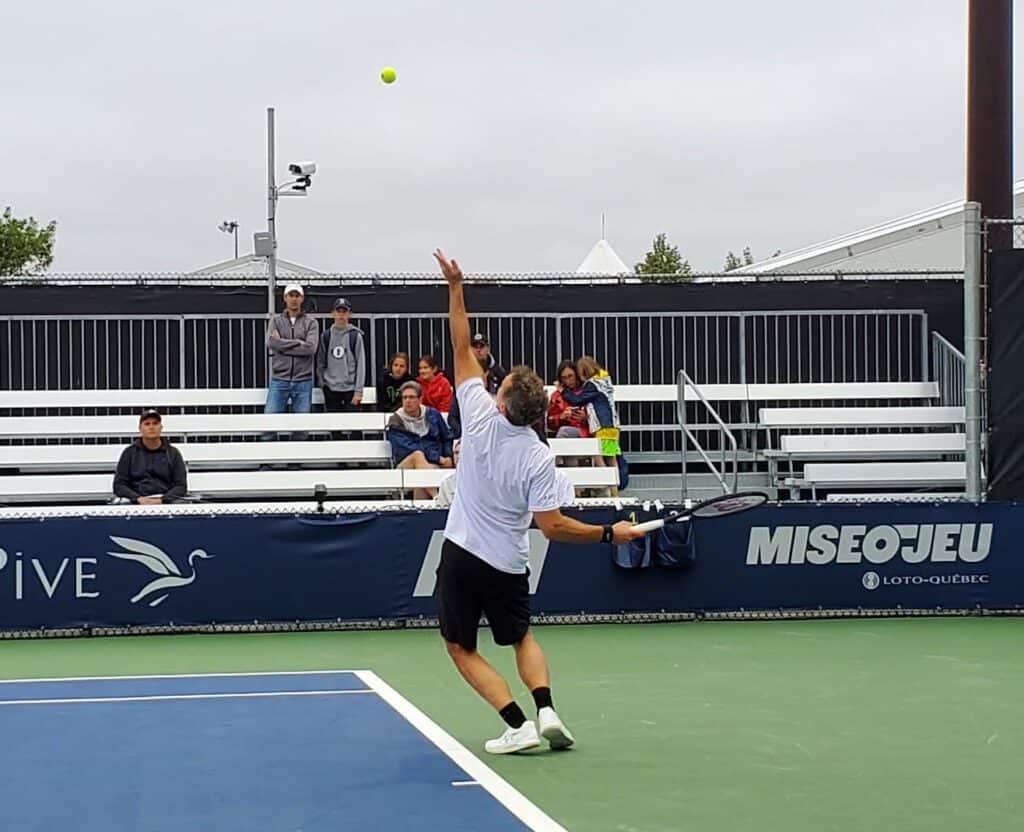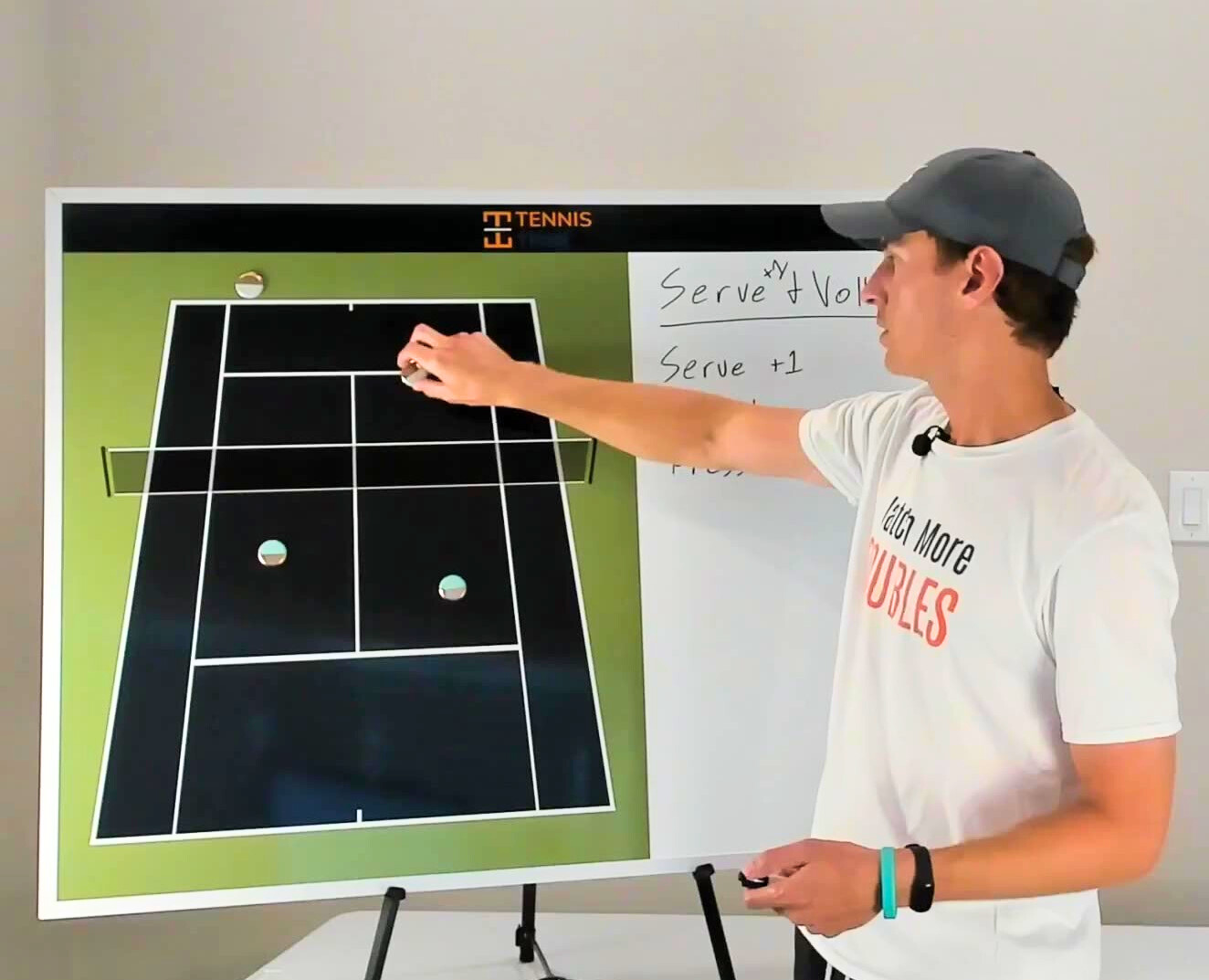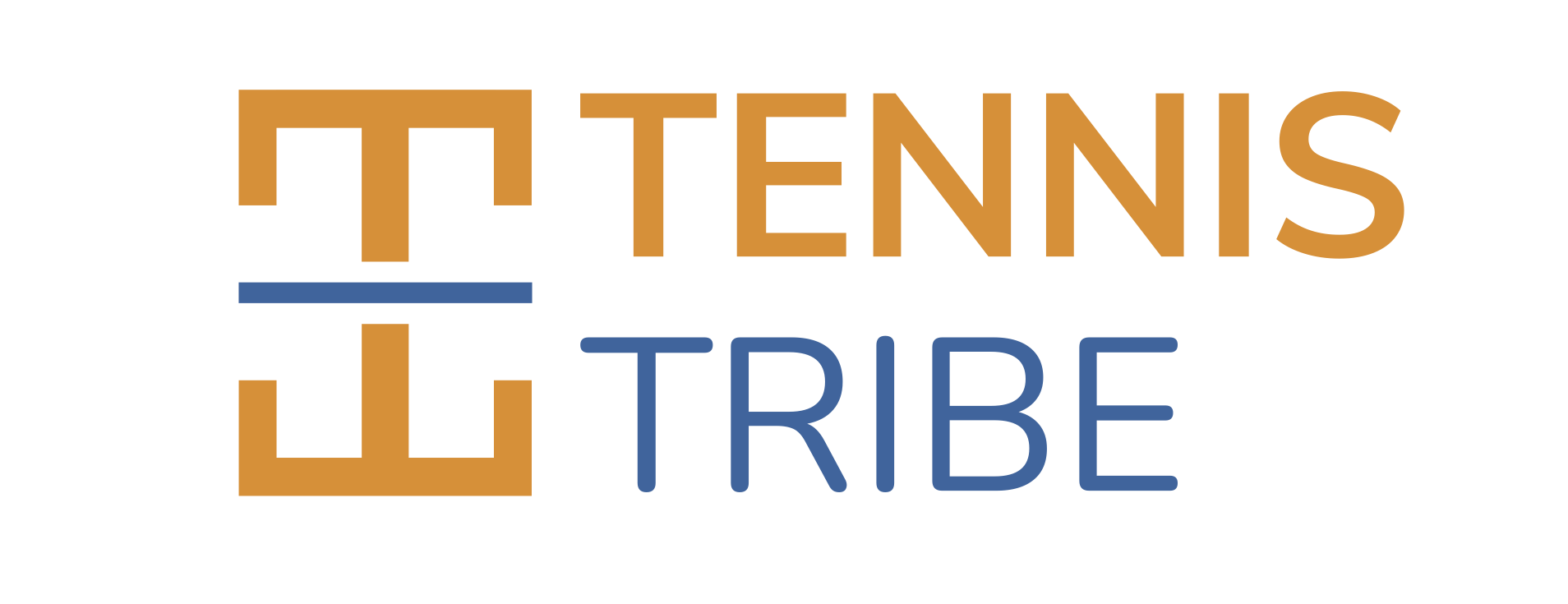The ten point tie breakers are one of the most important moments in tennis matches.
People want to know, what works in a super tie breaker?
How can I win more 3rd set match tie breaks?
Below are 8 tips you can use when you find yourself in a 10 point tiebreaker. Follow these and you’ll put yourself and your doubles partner in a position to win, and find you opponents frustrated and off they’re game.
First, let’s clarify what a super tie break is…
What is a Super Tiebreaker in Tennis?
A super tie break is just like a regular tiebreaker in tennis, but played to 10 points instead of 7. It’s usually played in place of a full 3rd set when the opponents each win 1 of the first two set (known as splitting sets).
Super tie breakers are also called:
- Ten point tie breaks
- Match tie breaks
Traditional tie breaks are played where players switch every 6 points.
However in doubles, sometimes players or tournaments will use a coman tie breaker. In a coman tie breaker, players switch after the 1st point, and then every 4 points. This allows the players to serve on the same side they have been using for the previous set.
So now you are clear on what a super tiebreaker is.
How can you make sure your doubles team wins them?
Skyrocket your serve strategy in doubles with this FREE 5-day course >>>
#1 – Make 1st Serves
The idea that you want to make first serves is generally true on the doubles court. You want to be making around 70% of your 1st serves in doubles (that number is lower in singles).

However it becomes even more true in super tie breakers.
Since you and I don’t get paid to play tennis 5 hours a day, we can’t handle the nerves as well as the pros. So we want to avoid 2nd serves as much as possible.
Free points, including double faults, become highlighted in super tie breakers.
#2 – Block Returns Back Crosscourt
This will depend on the aggressiveness of the other net player, but the point here is to make as many returns as possible without going for much.
I typically wouldn’t recommend returning up the line, for example, in a match tie break. You want to make the other team play their weakest shots, but don’t beat yourself. Unless they have a surprisingly weak serve, I usually keep everything crosscourt until I can get to the net.
I’ve found that most net players get more timid during ten point tiebreakers because of their fear of failure. So I don’t have to do much with the return other than get it in crosscourt.
Then after my return I like to…
MOST POPULAR COURSE!
25 Winning Doubles Tactics
Guaranteed to help you play smarter & win more matches.
- Over 50 video doubles lessons
- 60+ ATP & WTA points analyzed
- Nearly 3 hours of strategy content

Will Boucek – ATP & WTA Doubles Strategy Analyst.
#3 – Get to the Net!
This works well in super tiebreakers for 2 reasons.
- It adds pressure to the opponent. When you crowd the net, they’ll feel that, go for a little more, and miss.
- I’m less likely to get nervous on a volley than a groundstroke since I have less time to think about it.
Again this is a great doubles strategy in general but I’ve found that it becomes even more important in tiebreakers.
One of the reasons it works well for me, however, is that getting to the net is one of my strengths.
#4 – Double down on your strengths
10 point tiebreakers can make you nervous.
To mitigate your nerves, hit your strongest shots. If you have a go-to slice serve, hit it. If you like your forehand better, make sure you’re hitting a lot of forehands.
For people like me, it your serve or return and get to the net 🙂
#5 – Attack the Opponent’s Weakness Relentlessly
Your opponent is likely nervous too.
When someone is nervous, the first thing to go is their weakest shots. I usually try to keep every serve, and groundstrokes to the opponent’s backhand.
When both players are at the net, no need to hit a winner. Just hit at the weaker player’s backhand volley.
This will make their nerves really come through, and they’ll miss.
Do this relentlessly. It will be tempting to change it up, but if it’s working, don’t change anything. If I know my opponent hates they’re backhand return, they will not see a forehand during the tiebreaker. Even if I have to take something off my serve to get it in.
#6 – Move More at the Net
Fake if you’re not comfortable poaching. This is the time to make sure the returner sees you at the net.
While we want to keep our returns crosscourt and conservative, we want to make them go for more and miss.
#7 – Do What Worked Before
This is not the time to try something new. You had plenty of time to figure out what works in the first two sets.
If you poached really effectively, continue it in the tiebreaker. If you’ve been consistently serving kicks serves for return errors, keep it up.
A mistake many teams make is that they’ll change what they were doing that worked. Specifically, most doubles players will play more conservatively in the tiebreaker. This isn’t the time to back down from what’s working.
#8 – Talk More with Your Doubles Partner
During the match I’ll only talk with my doubles partner a few times per game. But when matches get tight, I’ll talk between every point.
It helps my partner and I stay focused on the game plan.
Even if you don’t think you need it, you probably should be doing this. One point can make all the difference in a super tie break.
What is Your Strategy to Win Super Tie Breaks?
Everyone handles pressure differently, and has their own ways of dealing with match tie breaks. Like most things in tennis, there’s no one size fits all approach.
Over to you!
Comment below with your favorite strategy for winning super tie breaks.
What did I not say above?


Good tips! Talking to your partner more during a STB is good advise. If you got that far, stay focused.
Going to the net and moving around more works great, too. It throws off the opponent.
Thanks Claire!
I totally agree. Communication and movement on the tennis court are crucial because they’re often the first 2 things to leave when a player gets nervous 🙂
Who serves first? The one winning more points with serve or the other player?
Hi Adriana, go with the server who wins more points first. You want to improve your chances of going up 1-0 as much as possible 🙂
Hi Will, thank you for your great Doubles info! I was wondering if you know the data regarding what the % is for a team doubles team winning the match tie break if they lost the first set and won the second set?
Hi Lauren, I don’t have that data but might be able to find it. I’d imagine it’s still close to 50-50. I’ll commment here if I do find it in the next few weeks.
I believe in constant movement…have always recommended “put your high heel shoes on”. Movement across the net gets attention especially at net which I practice regularly. Regarding lobs….if playing lobbers and I am up and partner comes up to get return I head back to be there for probable lob return over partner!
Hi Kay, yes that’s great advice! Movement will keep the opponent guessing and help force errors. I usually recommend 1-up 1-back vs lobbers as well. Find a weakness and be ready for an overhead when it comes 🙂
One point at a time. “How many points do we need to win?” Partner: “Ten”.
Me: “No. One”.
Yes! One point at a time… love it!